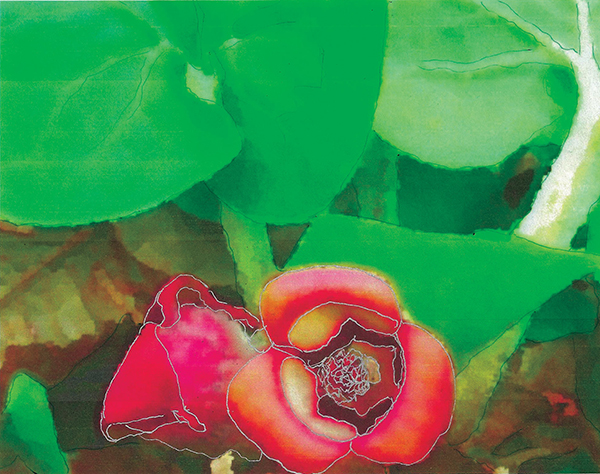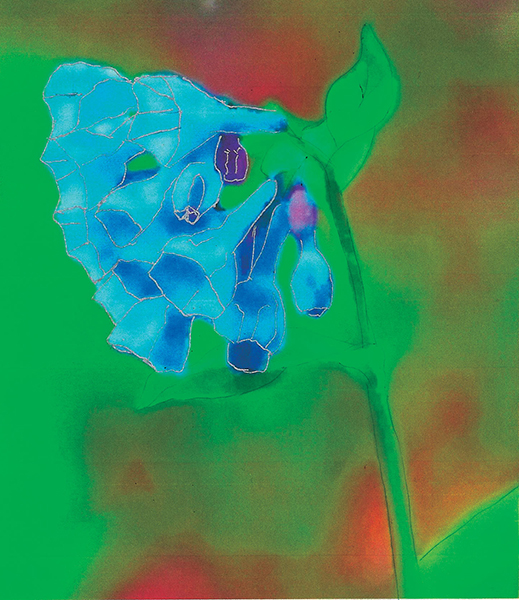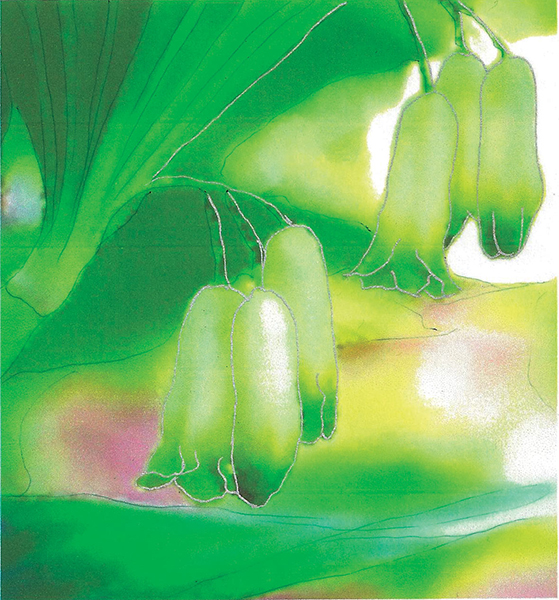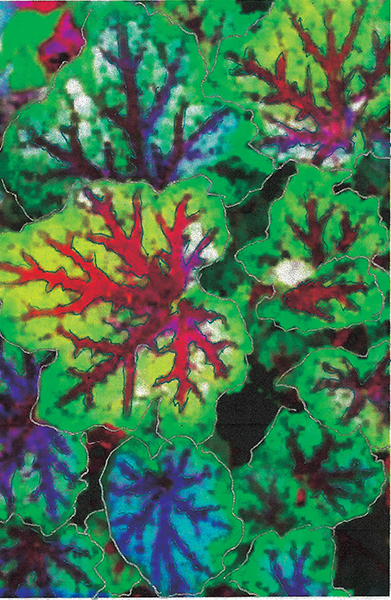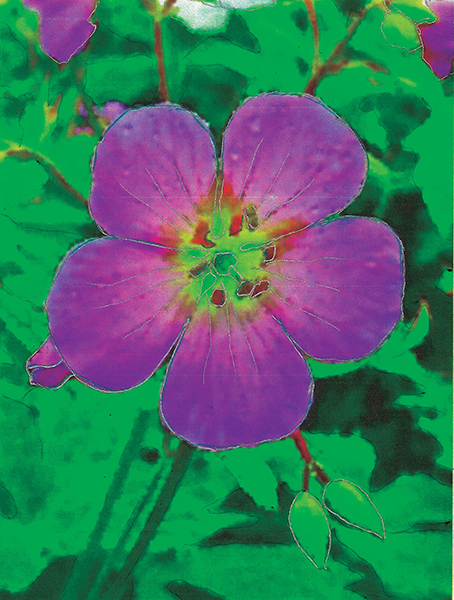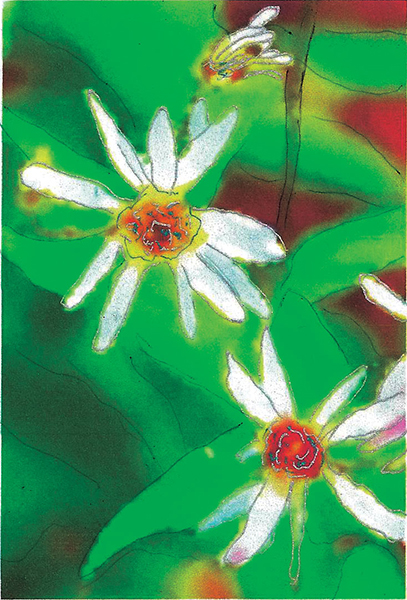Made in the Shade
by Laura Everard
“I can’t grow anything because my garden is too shady.” If I had a dollar for the number of times people told me this, I would have enough money to buy all of the plants they would need to revamp their shade garden! Just because you aren’t living in the blinding sun doesn’t mean you can’t grow a wide variety of interesting, beautiful plants that have a positive impact on your ecosystem.
Native plants can benefit your garden in several ways: They attract pollinators, preserve the local ecosystem and promote biodiversity. Also, native plants will already be well adapted to the area so they will usually be easier to care for in the long term than many exotics. You can find natives at many local nurseries, and the staff are usually happy to help you select your plants.
Do your research before you buy, because there can be multiple plants with similar names that are not the native varieties. Never collect plants from the wild. It can negatively impact the ecosystem in the area—although removing plants from the wild can change the look of the landscape, the biggest concern is that 90 percent of native insects feed on three or fewer species of plant, so removing specimens from the wild can directly affect the microecosystem. You can also bring pests and diseases that you may not have seen in the wild into your garden.
Here are a few of my favorite native shade perennials, which are surprisingly easy to grow and propagate.
Asarum canadense/wild ginger
Despite its name, wild ginger has no relation to the ginger we eat. It picked up its name from the strong scent that the rhizomes emit when crushed. Early settlers used this plant as a ginger substitute, and it is sometimes still used today in herbal mixtures. This plant is a low-lying ground cover with large, green leaves that make it a fantastic shade specimen. Sometime between April and May, when you lift up the leaves, you will find funky maroon flowers that look like something out of a fairytale. They grow best in moderately damp—but well-drained—soil and succumb to very few pests. Wild ginger is a perennial that spreads through rhizomes, so digging and transplanting can both spread and control it. The flowers can attract butterflies, and the plants act as a host for pipevine swallowtail caterpillars. It is sold at many garden centers, and you only need one to get the party started, since they spread on their own. Propagating through division in the spring is best once you have established plants.
Mertensia virginica/Virginia bluebells
Emerging in the early spring, Virginia bluebells put on a gorgeous display from April to June before dying back to the ground for the year. The incredible flowers start off as pink buds that open up to reveal trumpet-shaped blue flowers. Virginia bluebells should be planted with other, longer-lasting plants, since they go dormant halfway through the year. The show they give you in the spring makes them worthy shade plants that brighten up any dark area. They do best in well-drained soil with a high organic content. These perennials are easily propagated via seed, but you can always buy them at a local nursery. They attract bees, butterflies and moths, so if you are interested in hosting pollinators in your garden, check this plant out!
Polygonatum biflorum/Solomon’s seal
This hardy rhizomatous woodland perennial is an excellent filler for any shade garden. Although they are great ornamental plants, they can be used as an edible starch. In May, small green and white, pendulous flowers appear along the stalk and last through June. In the fall, the flowers are replaced with beautiful dark-blue berries (which are not edible), and the foliage turns a striking yellow, making it a plant that will bring interest to your garden most of the year. Although they do best in areas with a lot of moisture, they are highly versatile and can tolerate a variety of conditions once established. This is a common landscaping plant and can be found in most garden centers that sell perennials. Since they are rhizomatous, they spread well and can be easily propagated and controlled through division.
Heuchera Americana/alumroot
Heuchera is a low-lying, clumping perennial with fascinating foliage. It is well known for having leaves that come in every color of the rainbow, but this specific variety is the one native to this region. They have silver and green leaves, and the intensity of color varies depending on the amount of light they are exposed to. Tiny cream flowers emerge on tall stalks in May and last until June. These stalks should be clipped once they are finished blooming to encourage more flowering. This plant’s foliage is evergreen, so you will have color in your garden year-round. All they require as far as spring cleanup goes is a basic trim around the base to remove the old leaves. They grow in a variety of soil conditions and can be divided once they have a couple of years to establish. You can find heuchera in any garden center that sells perennials.
Geranium maculatum/wild geranium or cranesbill
Wild geraniums are surprisingly versatile perennials that can tolerate a variety of light, soil and moisture conditions. Dainty pink flowers emerge on stalks in April and can last until August. Although you will get more blooms if you can provide some sunlight as well as rich, well-drained soil, this rock star will bloom in shade and poor soil conditions. Unlike the ornamental geraniums that we all know, deadheading them is not necessary; in fact, the maintenance level for these guys is surprisingly low. Wild geraniums are also known as cranesbill because of the distinctive seed heads that form after flowering. These plants can be propagated through rhizome division or by seed. If you collect the seedpods, wait until they darken in color, carefully cut them from the plant, and store them in a bag until you are ready to sow them. The pods will burst open in the bag, making it easy to separate the seeds. The seedpods can attract a variety of birds including mourning doves.
Aster divaricatus/white wood aster
White wood asters are fall-blooming natives that are easy to grow and generally pest-free. Tiny but plentiful daisylike flowers start showing up in August and last throughout the fall. These blooms will bring butterflies from all corners of the city into your garden. As the flowers fade, the center darkens from a vibrant yellow to a lovely burgundy, which perfectly coincides with the fall season. The flower stalks are black, which provides a lovely contrast against the brilliant white flowers. The foliage is also pleasing, with its heart-shaped, highly segmented leaves, offering interest for the majority of the growing season. Generally found in woodland settings, this plant can tolerate many soil and moisture conditions. These plants are easily purchased at garden centers that sell woodland natives, and they can later be divided once they have established in your garden.
Try Some, Buy Some
This is just a small sample of native plants, shrubs and trees that do well in shade gardens. Make sure you research other options so that you can have a garden that fits all of your specifications.
Pennsylvania nurseries that specialize in native plants:



